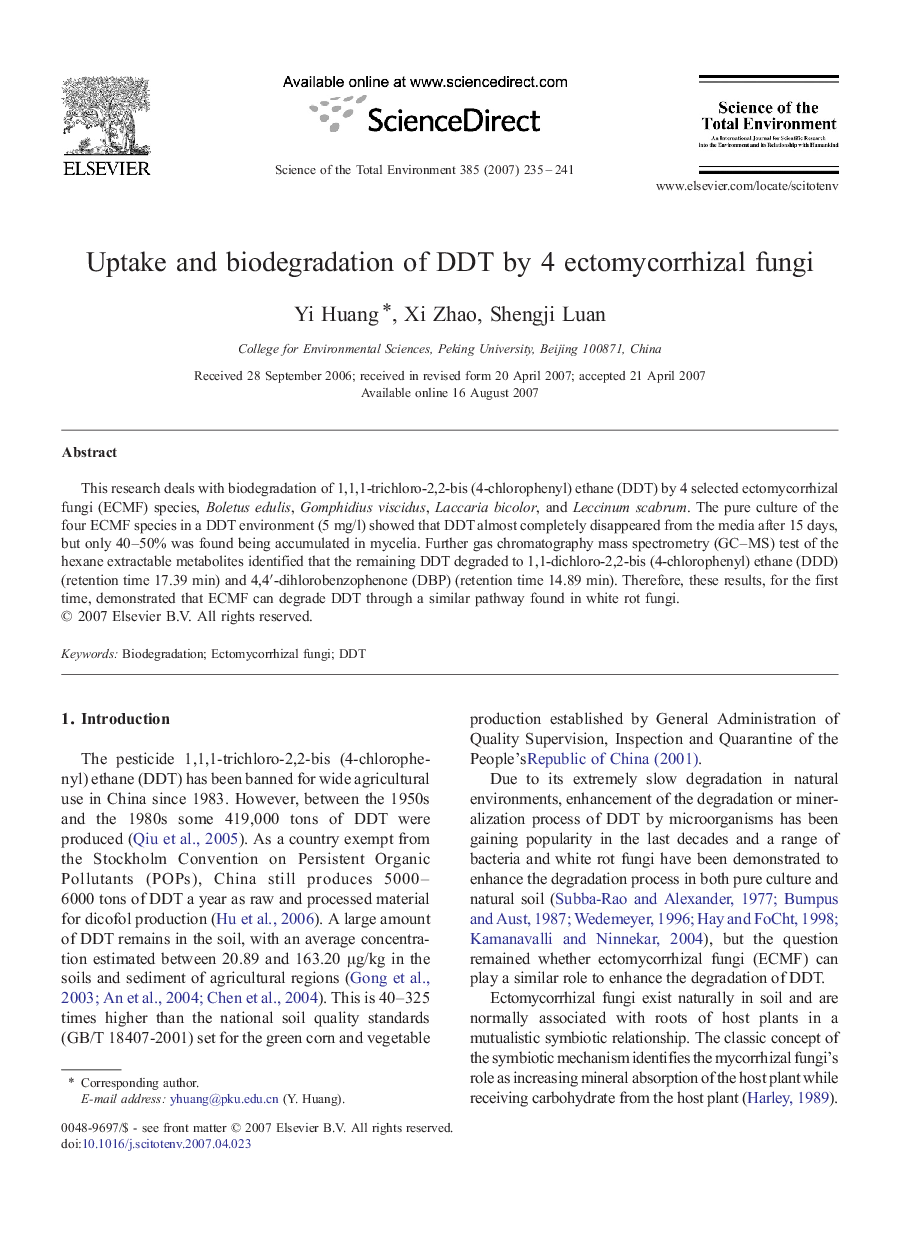| Article ID | Journal | Published Year | Pages | File Type |
|---|---|---|---|---|
| 4432806 | Science of The Total Environment | 2007 | 7 Pages |
This research deals with biodegradation of 1,1,1-trichloro-2,2-bis (4-chlorophenyl) ethane (DDT) by 4 selected ectomycorrhizal fungi (ECMF) species, Boletus edulis, Gomphidius viscidus, Laccaria bicolor, and Leccinum scabrum. The pure culture of the four ECMF species in a DDT environment (5 mg/l) showed that DDT almost completely disappeared from the media after 15 days, but only 40–50% was found being accumulated in mycelia. Further gas chromatography mass spectrometry (GC–MS) test of the hexane extractable metabolites identified that the remaining DDT degraded to 1,1-dichloro-2,2-bis (4-chlorophenyl) ethane (DDD) (retention time 17.39 min) and 4,4′-dihlorobenzophenone (DBP) (retention time 14.89 min). Therefore, these results, for the first time, demonstrated that ECMF can degrade DDT through a similar pathway found in white rot fungi.
